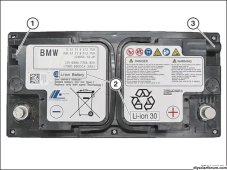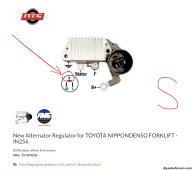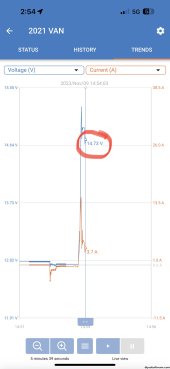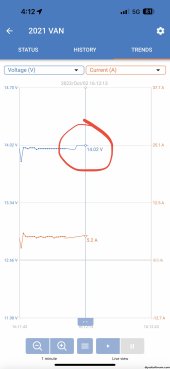I know this is an old thread but many people will read it when google searching for insight into charging lithium battery chemistry using a car, bus, or truck alternator. I've read through the entire thread and have determined that there is one piece of information that everyone here seems to have missed. I believe that this comment will put a definitive end to the argument.
That piece of info is that there is a PROFOUND difference between the ESR (equivalent series resistance) of lead acid batteries verses the ESR of LiFePO4 or lithium ion, especially when comparing ESR at a discharged state. This is why standard car, bus, or truck alternators cannot be directly connected to any kind of lithium battery.
Standard alternators are designed to charge lead acid batteries that have a high ESR when discharged, thus providing a voltage drop through the battery itself when charging. That voltage drop adequately limits the charging current from the alternator. In this scenario, the battery ESR is much greater than the alternator "ESR" so very little heat is generated in the alternator. The alternator runs cool and is never overloaded.
On the other hand, any type of lithium battery will have a relatively constant low ESR, even when 50% discharged, and this low ESR means the alternator will attempt to match the regulator voltage to the battery voltage, which will be impossible, so the alternator is then forced to dissipate an intense amount of power in an attempt to make up for the voltage difference.
If this is difficult to understand- please read this simplified case example:
A typical lead acid car battery that is 50% discharged may have an ESR around 50 milliohms. The resting voltage of this 50% discharged battery will be around 12.0 volts. When the car is started, the alternator will put out around 14.4 volts max, regardless of what the battery voltage is, because its output voltage is regulated to 14.4 volts. However, since the battery is sitting at 12.0 volts, there will be a 2.4 volt difference in voltage between battery and alternator. Therefore, due to the ESR of 50 milliohms, the charging current will be around 2.4 volts divded by 0.05 ohms = 48 amps. The actual charging current will be less, however, since lead acid batteries exhibit some hysteresis between the resting voltage and charge voltage, but that is another discussion and this calculation gets you into the ballpark. 48 amps is totally fine for most car alternators. Truck alternators need to be larger because they use more batteries in parallel- so the parallel ESR will be proportially less according to parallel resistance rules.
Now, replace that car battery with a 100Ah LiFePO4 battery with a relatively steady ESR of about 1 milliohm. Discharge the battery to 50% and the ESR stays around 1 milliohm! This is actually one of the biggest reasons why lithium batteries are superior to lead acid- it's all about the low and steady ESR. However, since the ESR is so low, it will not self-regulate charging current like lead acid batteries do. Working through the same calculation as above, given that we discharge the LiFePO4 battery down to 12.0 volts as in the previous example, we get a charging current of 2.4 volts divided by 0.001 ohms = 2400 amps! If the alternator could actually produce that much current it would attempt to be fed into the battery but the battery's internal BMS current protection would trip off. If the alternator can't produce that current, then it will be overloaded and either overheat or the alternator's regulator will fry out or trip.
This is all because standard car and truck alternators are voltage regulated, not current regulated. When you are charging your ebike or something, your AC wall charger has current regulation as well as voltage regulation. Vehicle alternators do NOT have current regulation because they assume to be connected to lead acid batteries.
This is why you need to add some kind of current regulating circuit between the vehicle alternator and any sort of lithium battery. The field control loop needs to be closed around either current or temperature or both, to keep both the battery and the alternator from being overloaded by excess current.
As the popularity of adding lithium batteries to automotive, RV, truck, and bus vehicle systems increases, manufacturers may develop new types of alternators designed to be compatible with lithium battery charging. They would incorporate both current and temperature regulation in addition to voltage regulation. But for now, we are stuck with having to DIY this kind of stuff.
Cheers, everyone, and happy DIYing.
BTW I am a retired NASA spacecraft avionics engineer, not that it matters.






